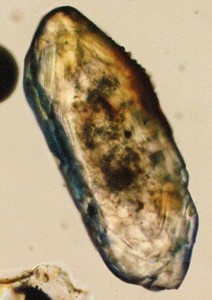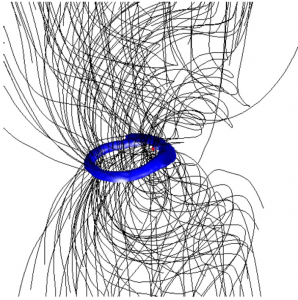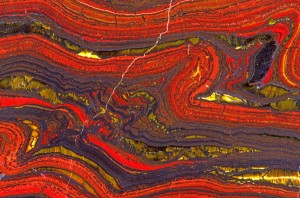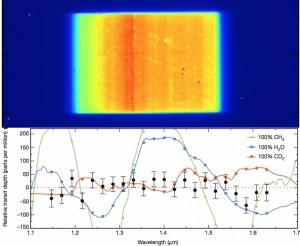Dr. Andrea Banzatti of the Space Telescope Science Institute visited today and talked about observing infrared (IR) light emitted by water vapor in protoplanetary disks.
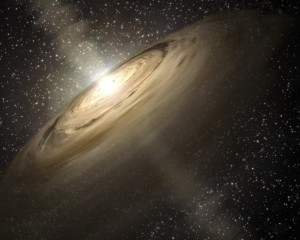
Artist illustration of a protoplanetary disk. From http://www.keckobservatory.org/index.php/gallery/detail/milky_way/32.
Planets like the Earth are born in these protoplanetary disks, the gas and dust leftover after a star forms, and by analyzing IR light, Banzatti can estimate how much water there is in a disk and how hot it is.
Water is a key ingredient in planet formation, especially for gas giants like Jupiter, and of course, a key requirement for life. So by learning about how much water is in disks, Banzatti is helping us understanding the earliest stages in planet formation and the origins of life.
Banzatti developed a new technique to study the temperature and abundance of water in disks, and his results suggest that ice grains actually migrate around the disk, in ways that have been expected but not observed.
